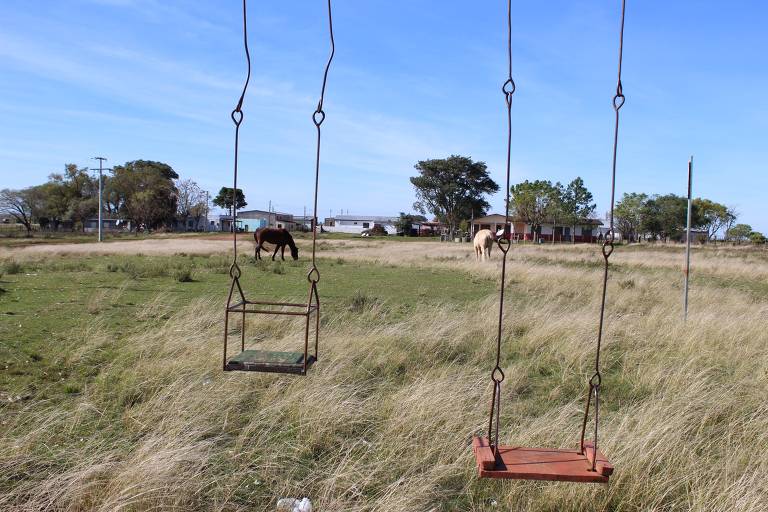Sheep graze on the pampa gaucho, in front of the General Bento Gonçalves school, in Vila Thomaz Albornoz. The next water tank features the sovereignty of the Brazilian State, with the motto of the Army, painted on its façade: "Strong arm, friendly hand."
But the school has been closed since the beginning of the year due to a lack of teachers, forcing a dozen Brazilian children to travel 2 km across the border to Uruguay to take classes at a public school in the nearby village of Masoller.
If it depended on the will of Uruguay, the sister towns would be part of the same country. August will mark 85 years since the last territorial dispute over 16 thousand km of Brazilian land that borders Uruguay.
In 1934, the neighboring country communicated to Brazil its desire to rediscuss ownership of the 22,000 hectares land, equivalent to 15% of the city of São Paulo.
Forty Brazilian families live in the village of Thomaz Albornoz, created in 1985, just after the regime, to reinforce Brazilian ownership of the territory. However, its inhabitants feel the presence of the Uruguayan State more so than the Brazilian State.
The presence of Brazil, residents say, boils down to sporadic actions by the Army to cut bush.
The border is evidenced only by centuries-old stone landmarks set every 200 meters. Circulation between the two countries is free, without any control.
The issue remains dormant, without affecting the day-to-day relationship of the two countries. The last protests from Uruguay on the subject are from the 1980s.
Translated by Kiratiana Freelon
